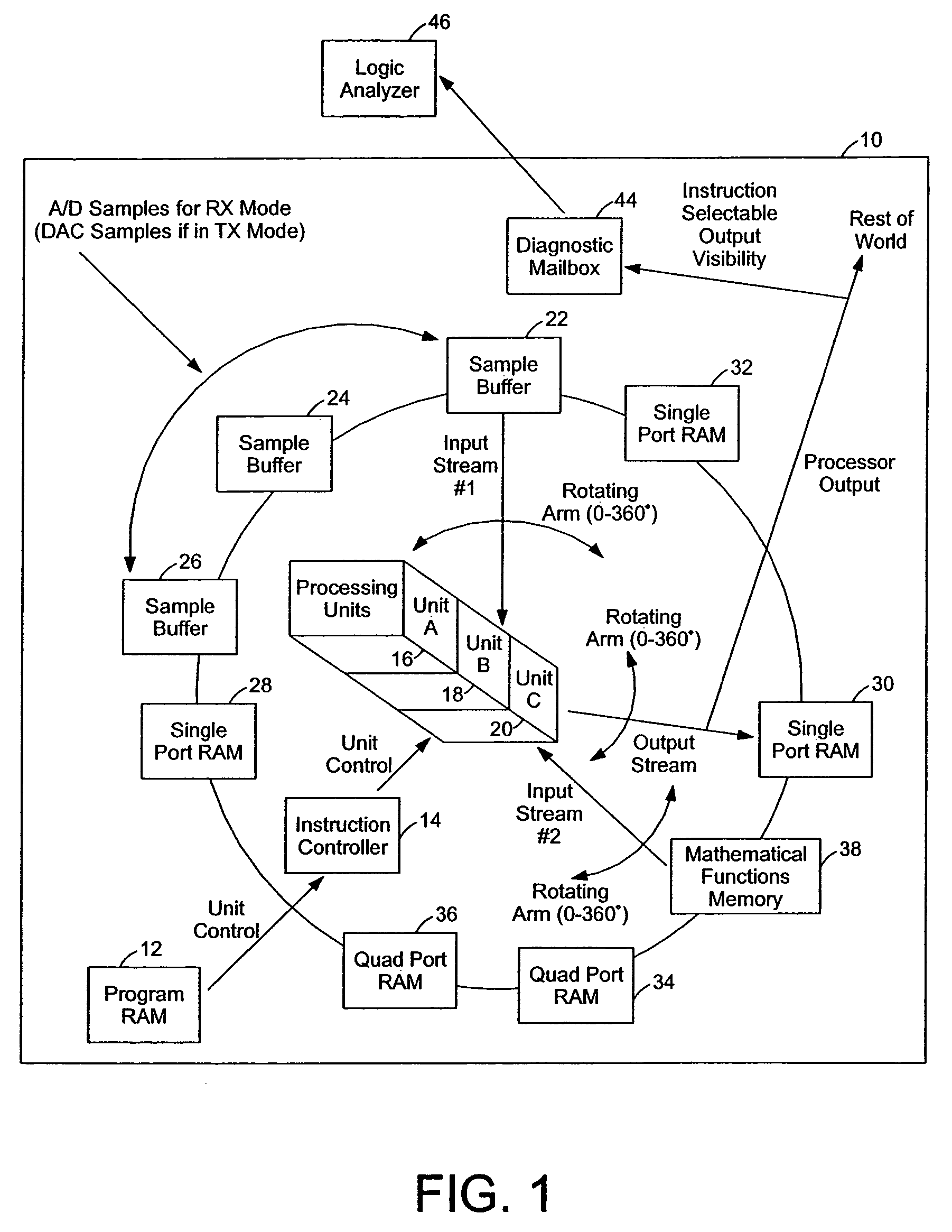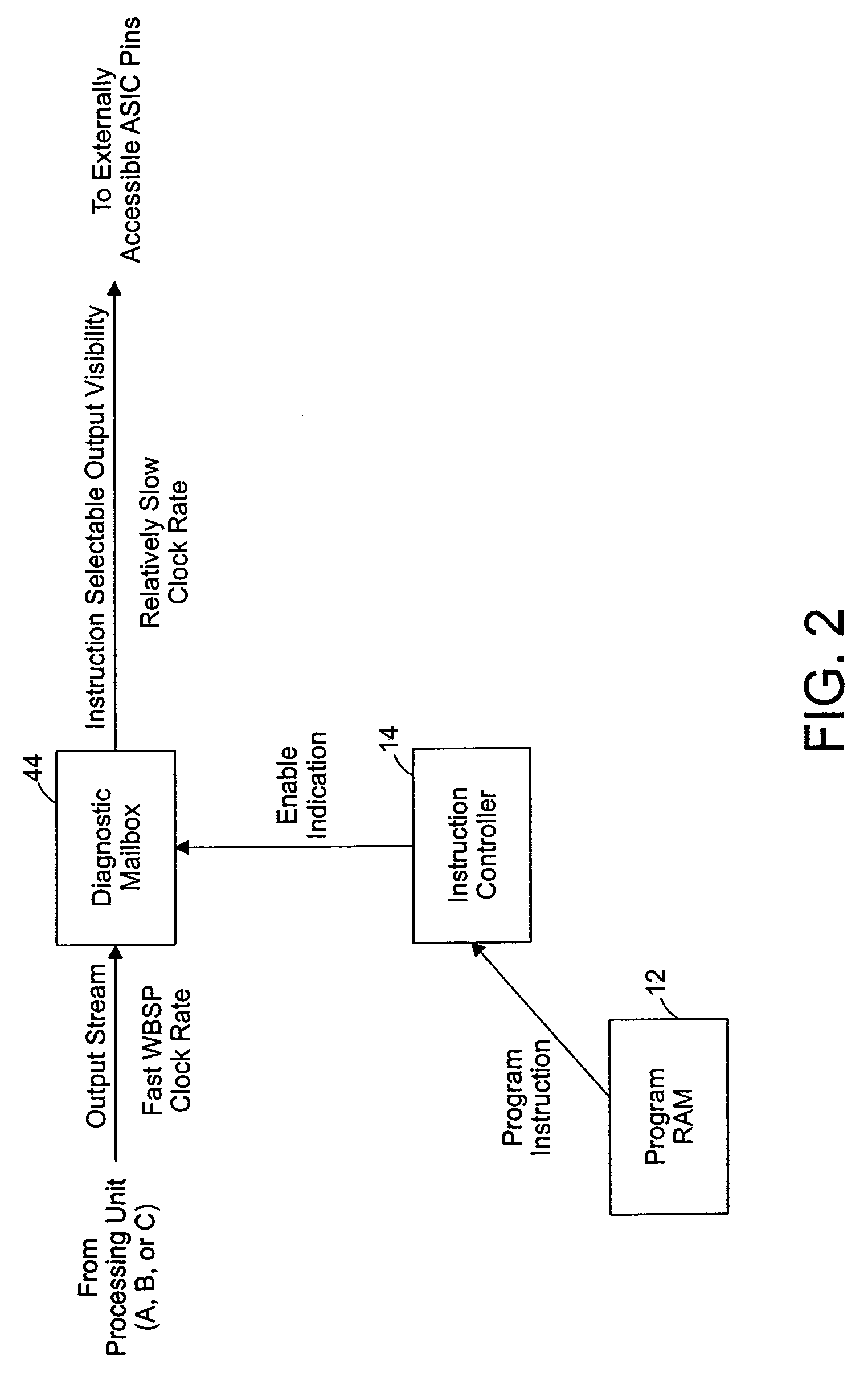Fast fourier transform (FFT) architecture in a multi-mode wireless processing system
a wireless processing system and fast fourier transform technology, applied in the field of communication systems and methods, can solve the problems of limiting “talk time”, conventional 802.11 implementations fail to meet user-acceptable power consumption parameters, and neither approach is suitable for broadband wireless
- Summary
- Abstract
- Description
- Claims
- Application Information
AI Technical Summary
Benefits of technology
Problems solved by technology
Method used
Image
Examples
Embodiment Construction
[0035]FIG. 1 illustrates a wireless broadband signal processing system 10. The wireless broadband signal processing system 10 can include a program memory 12, an instruction controller 14, and processing units 16, 18, and 20. The system 10 can also include sample buffers 22, 24, and 26; single port memories 28, 30, and 32; and quad port memories 34 and 36. The program memory 12 stores programmed instructions used by the instruction controller 14. The processing units 16, 18, and 20 are configured to perform vector processes, such as demodulation processes. For example, the processing unit 16 can be configured for a convolution operation calculated each clock, the processing unit 18 can be configured for FFT functionality where a Radix-4 butterfly is performed each clock, and the processing unit 20 can be configured for other vector operations, such as de-spreading, vector addition, vector subtraction, dot product, and component-by-component multiplication. Additional, fewer, or diff...
PUM
 Login to View More
Login to View More Abstract
Description
Claims
Application Information
 Login to View More
Login to View More - R&D
- Intellectual Property
- Life Sciences
- Materials
- Tech Scout
- Unparalleled Data Quality
- Higher Quality Content
- 60% Fewer Hallucinations
Browse by: Latest US Patents, China's latest patents, Technical Efficacy Thesaurus, Application Domain, Technology Topic, Popular Technical Reports.
© 2025 PatSnap. All rights reserved.Legal|Privacy policy|Modern Slavery Act Transparency Statement|Sitemap|About US| Contact US: help@patsnap.com



